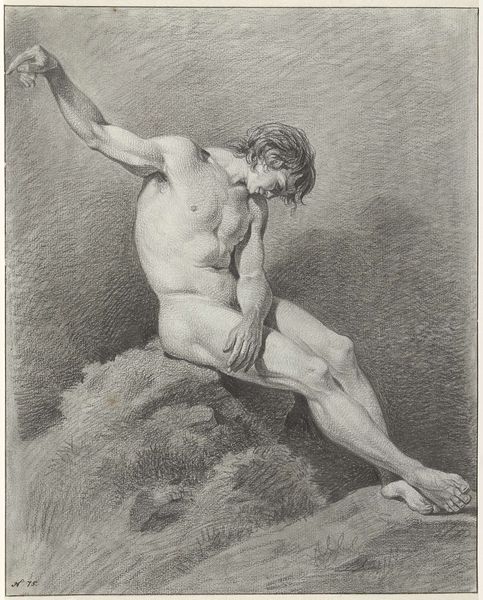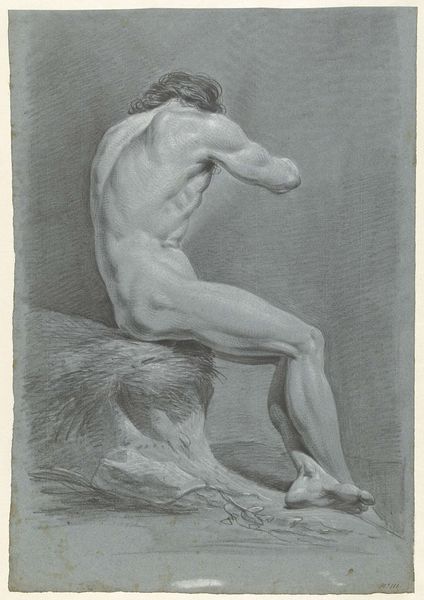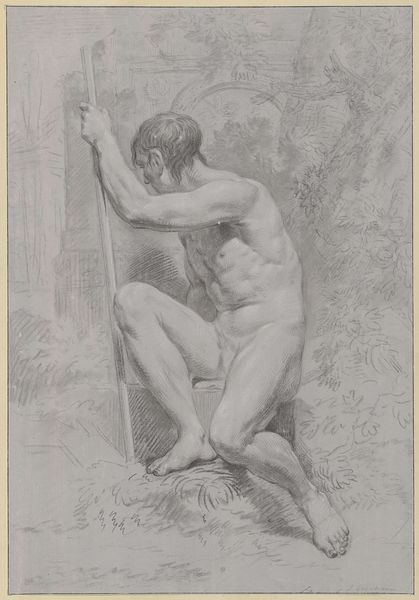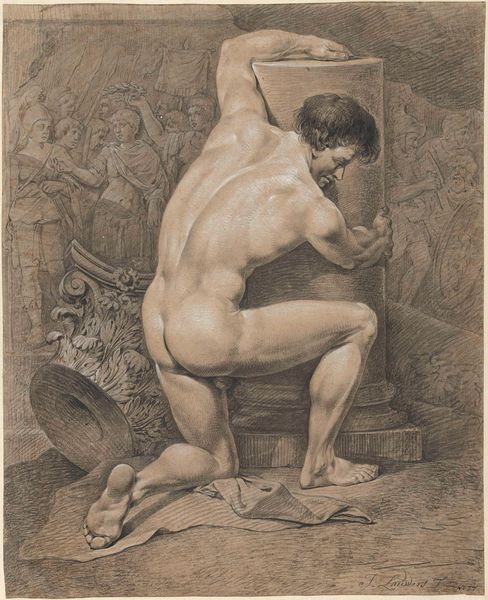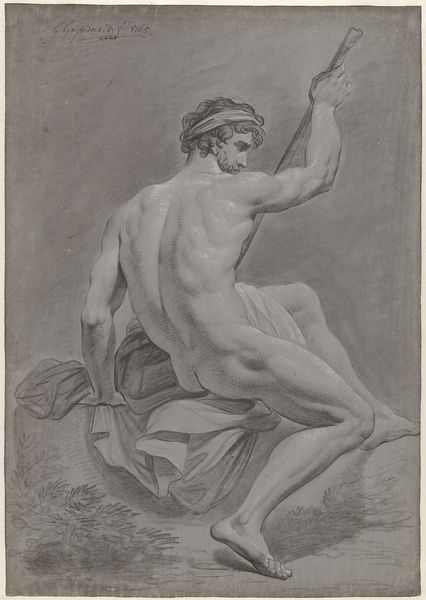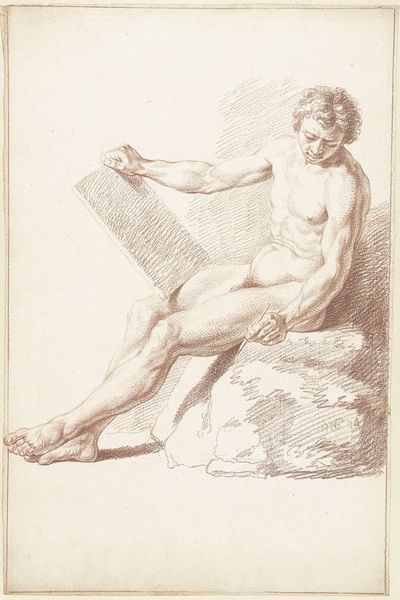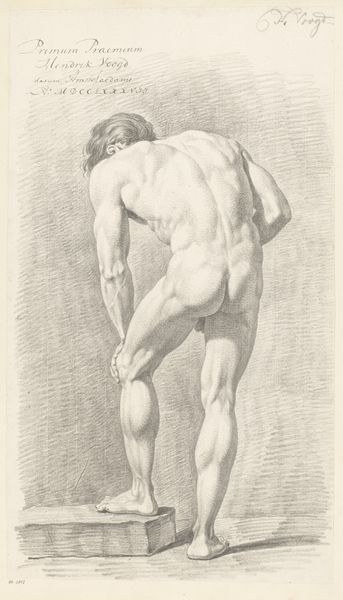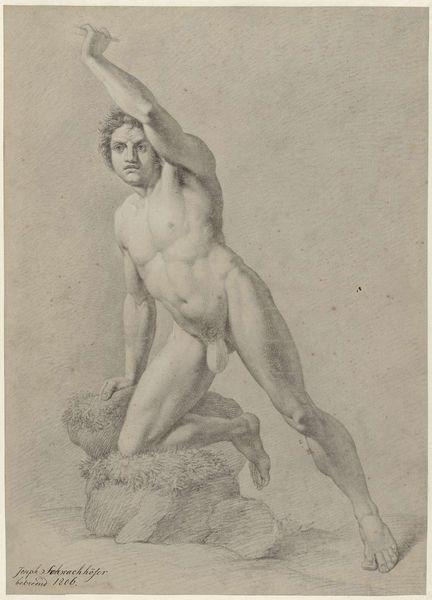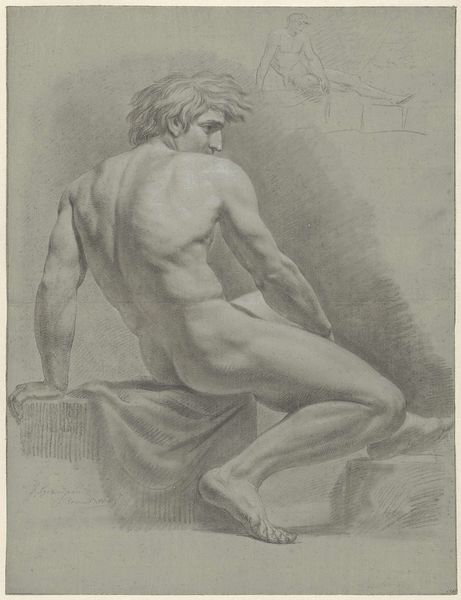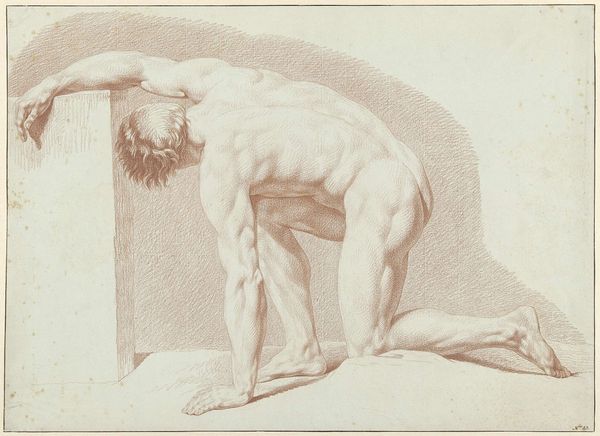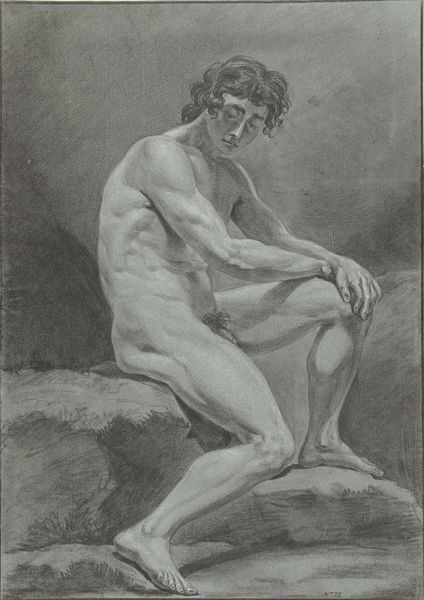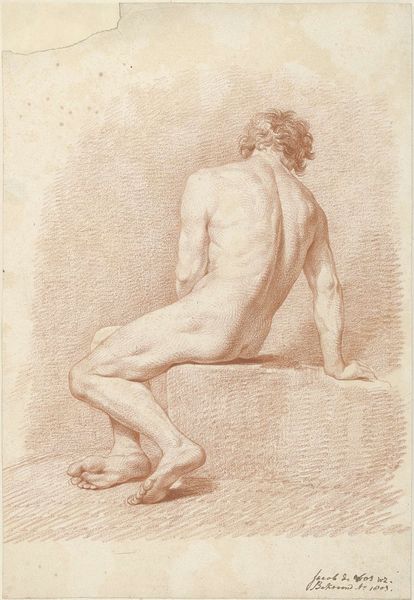
Knielend mannelijk naakt, de armen om een blok geslagen 1751 - 1822
0:00
0:00
drawing, pencil
#
pencil drawn
#
drawing
#
neoclassicism
#
pencil sketch
#
classical-realism
#
charcoal drawing
#
form
#
pencil drawing
#
pencil
#
portrait drawing
#
pencil work
#
academic-art
#
nude
Dimensions: height 451 mm, width 291 mm
Copyright: Rijks Museum: Open Domain
Curator: Here we have "Kneeling Male Nude, Arms Around a Block" a pencil drawing made between 1751 and 1822 by Noach van der Meer the Younger, currently housed in the Rijksmuseum. Editor: It strikes me as profoundly lonely, this figure, hunched and struggling with a burden we can’t even see clearly. There’s a real sense of isolation, a silent scream perhaps. Curator: It’s fascinating to see how artists of the time explored classical forms and ideals through drawing. There's a heavy reliance on established academic styles. The drawing style of this piece—it clearly references the classical past while embodying elements of realism in its depiction of the male form. Editor: I agree. And that neoclassical context provides a stark juxtaposition when we consider how marginalized bodies throughout history, specifically Black, brown, queer, and female bodies have been measured and judged against the white male form represented in academic pieces like this. Curator: Indeed. There’s an emphasis on idealized anatomy and rendering the human figure with meticulous precision, that would have been critical for aspiring artists and patrons alike. But also, it feels...incomplete. It lacks the finality we associate with "finished" artworks. Editor: Incompletion adds another layer to this man's narrative, this body as a stand-in. It hints at vulnerability. Think about the burden of masculinity it carries. Is he embracing the weight, or trapped beneath it? The very ambiguity sparks so many thoughts about body politics. Curator: Well, viewed in the social and historical contexts that it emerged from—"Kneeling Male Nude, Arms Around a Block" gives us insight into the role of classical idealism in 18th and 19th-century art. Editor: Absolutely. It's about how artworks, particularly those that claim "classicism" often carry legacies of exclusion and control. So pieces such as these, give us access points to interrogate those structures more powerfully.
Comments
No comments
Be the first to comment and join the conversation on the ultimate creative platform.

